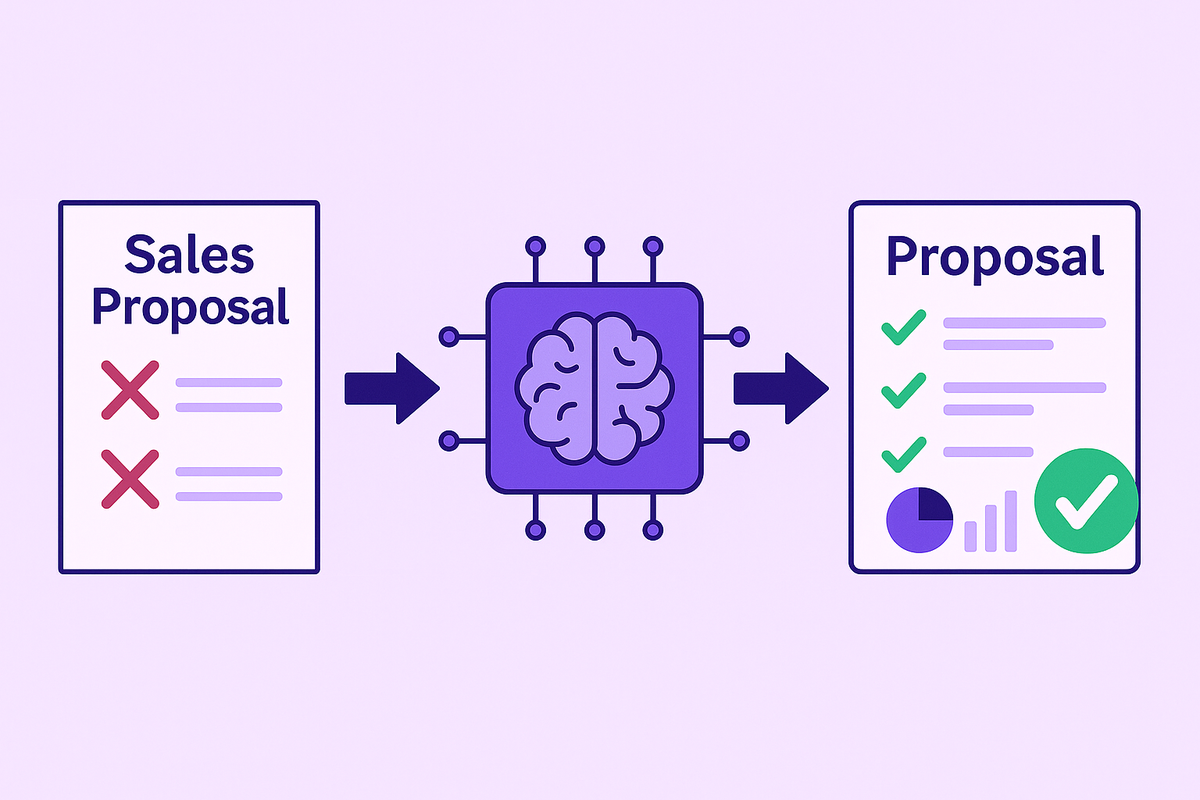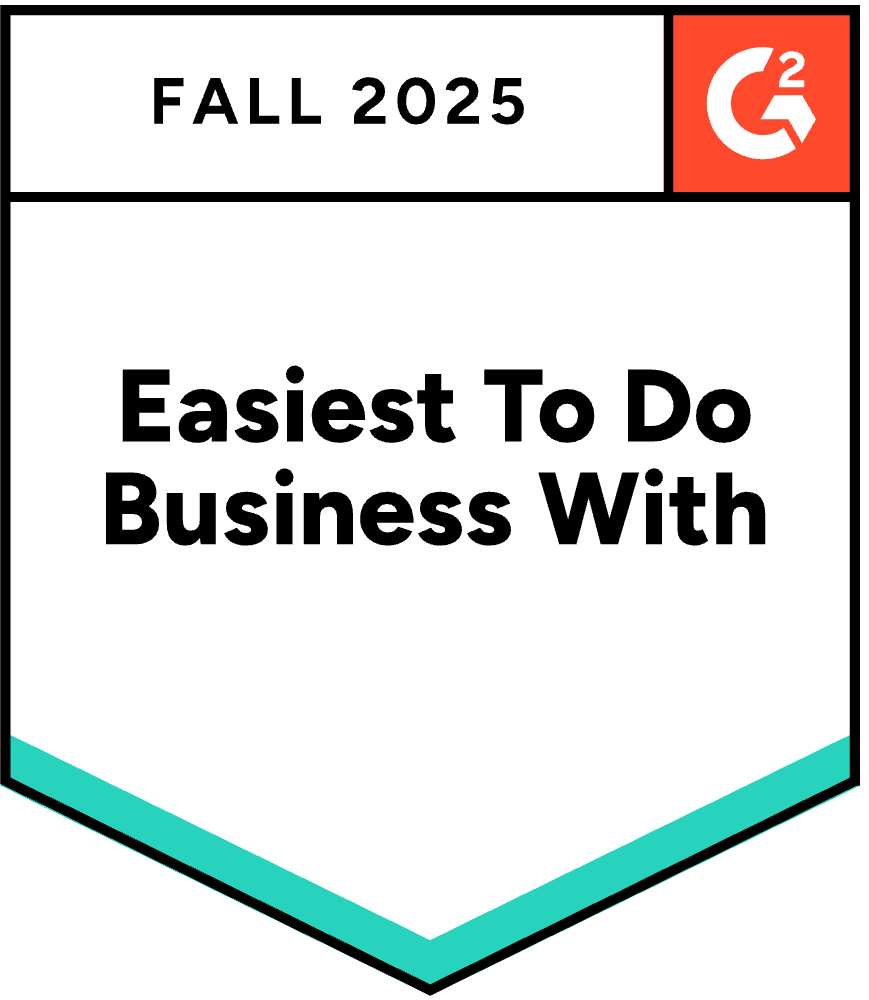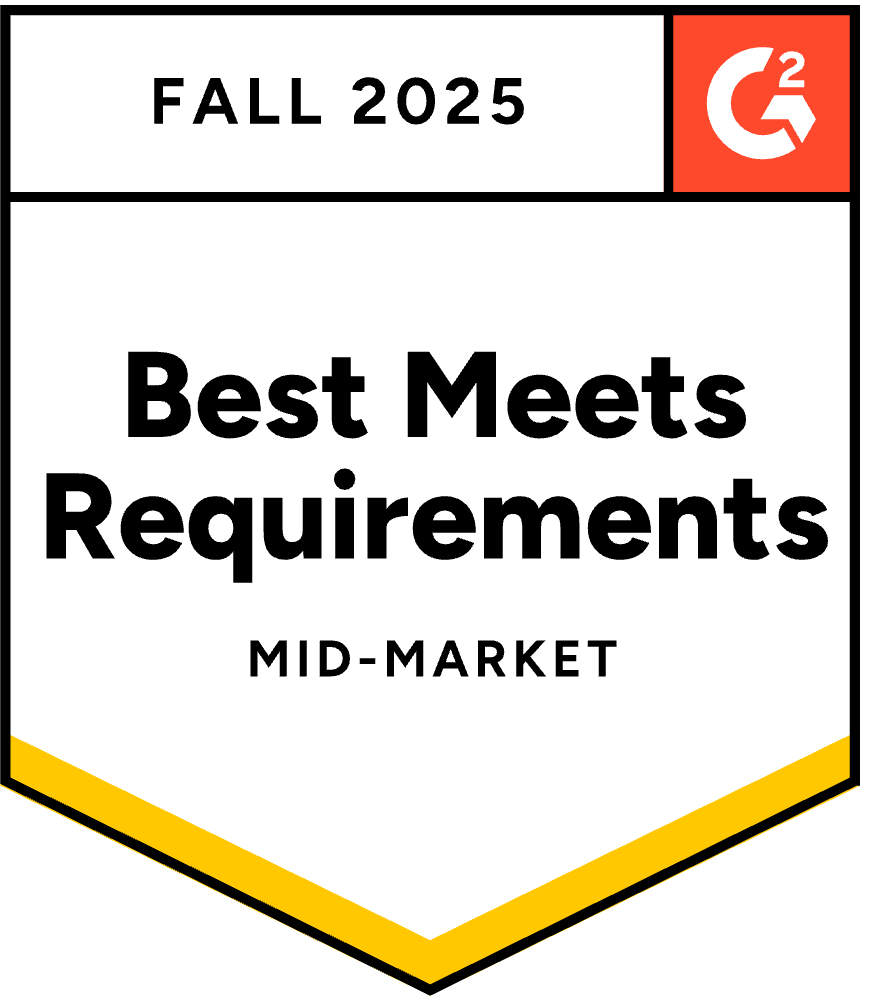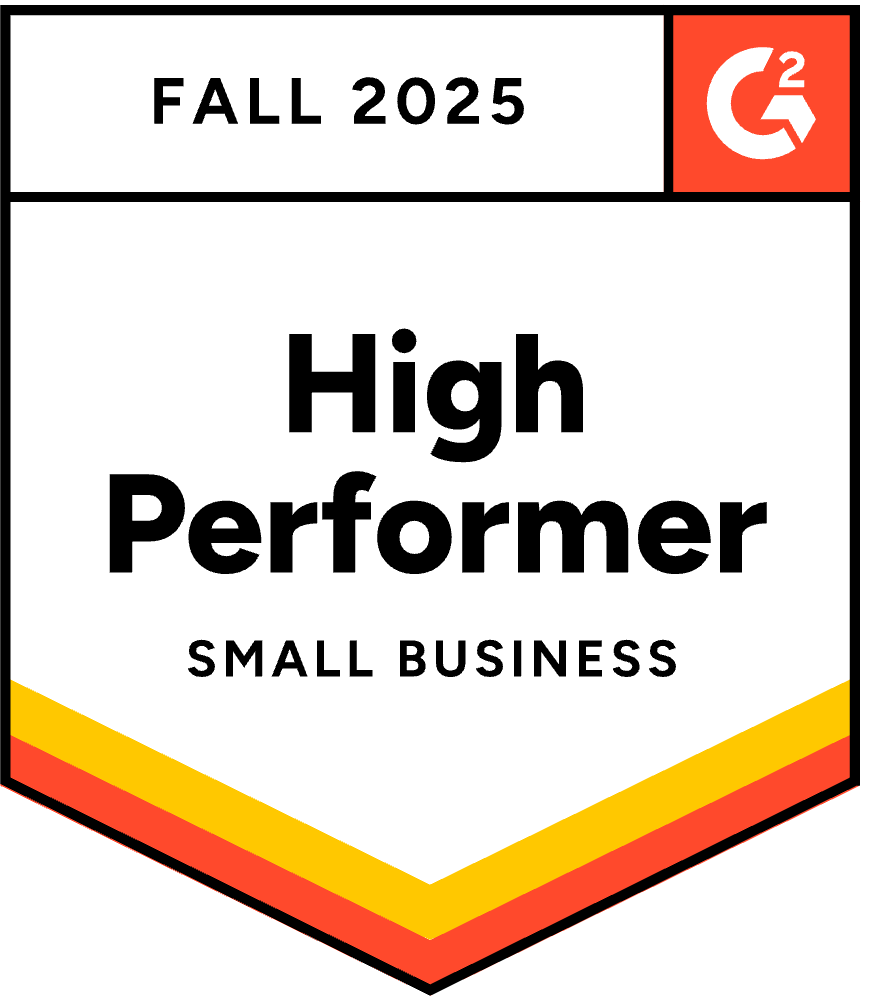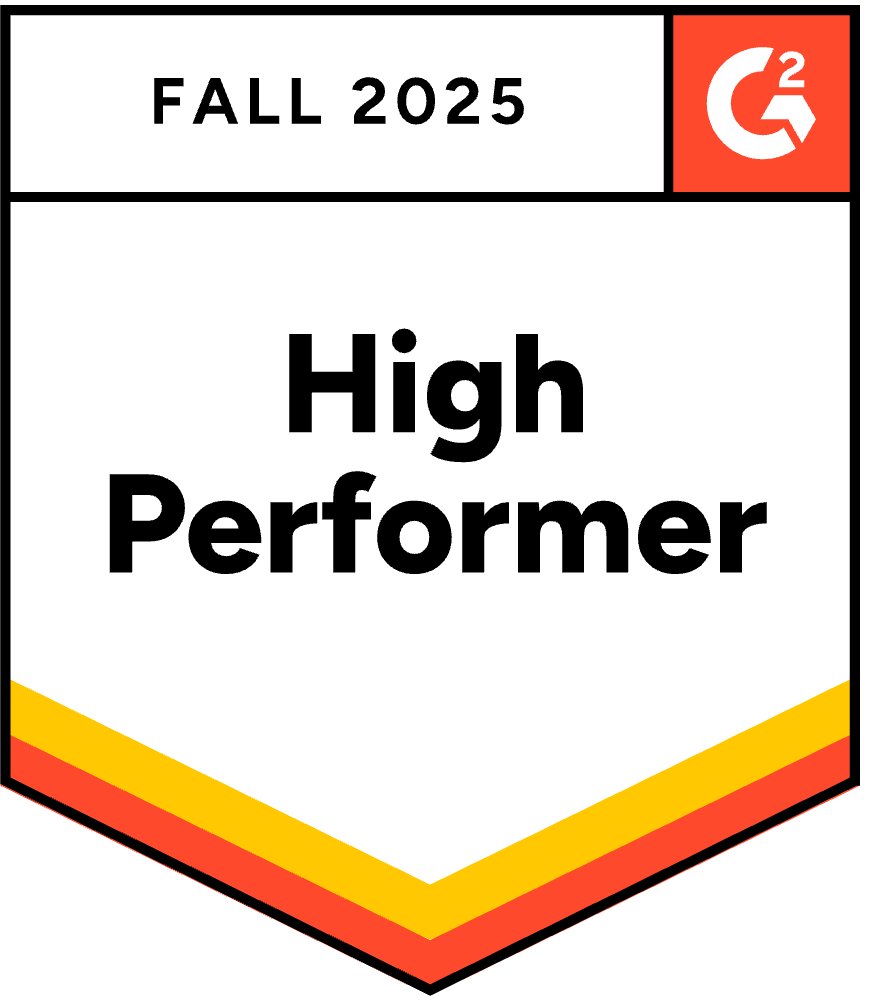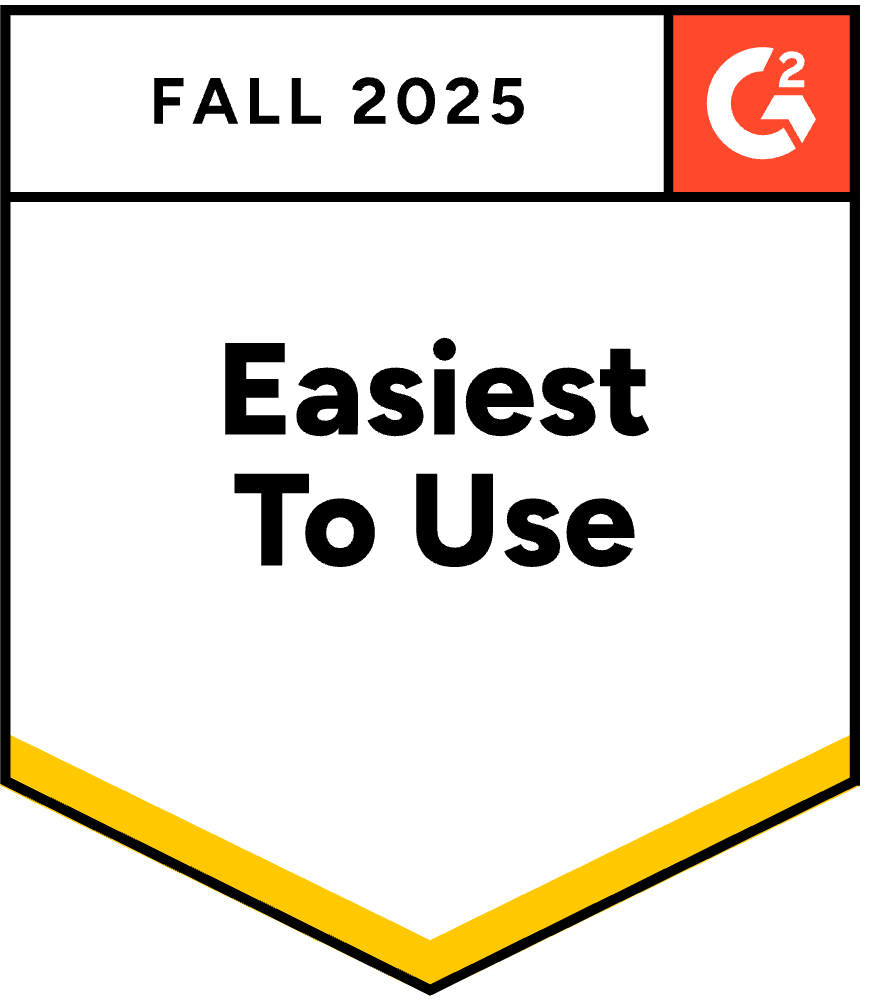6 Best RFP Analysis Tools to Win More Deals
October 30, 2025
By
Evie Secilmis

How much does your current RFP process truly cost your business? When you factor in the hours your top sales reps, engineers, and legal experts spend searching for answers instead of doing their core jobs, the number is often staggering. This hidden cost of manual work doesn't just drain resources; it leads to burnout and lost opportunities. An RFP analysis tool is an investment designed to deliver a clear and immediate return. By dramatically reducing the time it takes to create high-quality proposals, these platforms allow your team to respond to more opportunities and increase your win rate. This is about turning a cost center into a revenue driver.
Key Takeaways
- View RFP Software as a Strategic Investment: These tools do more than save time; they transform your process by centralizing content and automating tasks. This allows your team to shift from administrative work to the strategic thinking that produces higher-quality proposals and wins more deals.
- Prioritize AI-Powered Content and Seamless Integrations: The best tools use AI to generate accurate, personalized first drafts, not just search for keywords. Ensure any platform you choose connects directly with your CRM and other essential software to create a smooth, uninterrupted workflow.
- Plan Your Implementation for a Successful Adoption: The right software only works if your team uses it effectively. A smooth rollout requires defining your needs upfront, providing thorough training, and setting clear metrics to measure your success and prove the tool's value.
What Are RFP Analysis Tools?
Let’s be honest: manually responding to a Request for Proposal (RFP) can feel like a marathon. You’re digging through old documents for answers, chasing down subject matter experts for input, and trying to piece it all together before the deadline hits. It’s a time-consuming process that often pulls your most valuable team members away from their core responsibilities. This is where RFP analysis tools come in.
At their core, these tools are software platforms designed to streamline and automate the entire proposal process. Think of them as a central command center for all your RFPs, RFIs, Security Questionnaires, and other sales documents. Instead of managing everything through scattered emails and spreadsheets, an RFP tool provides a structured environment to collaborate, find information, and build winning proposals faster. The goal isn't just to speed things up; it's to improve the quality and consistency of your responses. By centralizing your data and automating repetitive tasks, these platforms empower your team to make smarter, data-driven decisions and focus on the strategic work that actually closes deals. A powerful AI deal desk can transform this traditionally manual process into a significant competitive advantage.
Core Functions and Capabilities
So, what do these tools actually do? While features vary, most RFP analysis platforms are built around a few key functions. First is a centralized content library, which acts as a single source of truth for all your approved answers, company information, and case studies. When a new RFP comes in, the software can automatically parse the questions and suggest the most relevant answers from your library. They also include powerful collaboration features, allowing sales teams, proposal managers, and subject matter experts to work together in real-time. This avoids version control nightmares and ensures everyone is on the same page. Finally, they offer workflow automation and analytics to help you manage deadlines and track your performance over time.
How AI is Changing the Game
The introduction of artificial intelligence has taken RFP software to a whole new level. Early tools were great for organizing content, but AI-powered platforms do so much more. They don't just find existing answers; they understand the context of a question and can help generate new, highly personalized responses. This is a game-changer for teams that need to tailor every proposal to a specific client's needs. AI can also proactively identify outdated or inconsistent information across your content library, ensuring your proposals are always accurate. These key benefits free up your team to focus on strategy, relationship-building, and crafting a narrative that truly resonates with the buyer.
Key Features to Look For
When you start comparing RFP analysis tools, you'll notice they all promise to save you time and help you win more deals. But how do they actually do it? The magic is in the features. The right combination of tools can transform your proposal process from a chaotic scramble into a well-oiled machine. Think of this as your checklist for finding a platform that not only fits your current workflow but also helps you scale.
Some features are non-negotiable, like a central place to store your content. Others, like advanced analytics, might be what separates a good tool from a great one. Your goal is to find a solution that addresses your team's biggest pain points. Are you spending too much time hunting for answers? Is collaboration a constant struggle with endless email chains and version control nightmares? Or are you flying blind, with no real data on why you win or lose bids? A solid RFP tool should provide clear solutions to these problems. As you explore your options, keep these key capabilities in mind to ensure you’re choosing a platform that will become an indispensable part of your sales toolkit.
AI and Machine Learning
This is more than just a buzzword; it's the engine of a modern RFP tool. Instead of just searching for keywords, AI and machine learning algorithms understand the context of a question and suggest the most relevant, high-quality answers from your content library. This intelligence is a potent and valuable tool for quickly creating accurate and compelling responses. It can also help identify gaps in your content, flag outdated information, and even analyze the RFP itself to highlight key requirements and potential red flags. This feature is what turns a simple content database into a strategic partner that helps you respond faster and smarter.
Centralized Content Library
Imagine never having to dig through old proposals, shared drives, or frantic Slack messages for that perfect answer again. A centralized content library is the heart of any RFP software. It’s a single source of truth where your team’s best, most up-to-date answers are stored, tagged, and easily searchable. This feature helps your team create proposals faster by building a searchable library of past answers. Instead of starting from scratch every time, you can reuse proven content, ensuring consistency in your messaging and brand voice. It also makes onboarding new team members a breeze, as they have immediate access to a wealth of institutional knowledge.
Workflow Automation
Repetitive, manual tasks are a major drain on your team's time and energy. Workflow automation handles the administrative side of the RFP process so your team can focus on strategy and content. This includes automatically assigning questions to subject matter experts, setting deadlines, sending reminders, and managing the approval process. By standardizing processes, you reduce the risk of human error, prevent bottlenecks, and ensure every proposal moves smoothly from start to finish. This creates a clear, repeatable system that makes every project more efficient and less stressful for everyone involved.
Seamless Integrations
An RFP tool shouldn't exist on an island. To be truly effective, it needs to fit into your existing tech stack. Seamless integrations connect your RFP software with the tools your team already relies on every day. Look for platforms that can connect with other software you already use, like Salesforce or HubSpot for customer data, Slack or Microsoft Teams for communication, and cloud storage like Google Drive or SharePoint. These connections eliminate the need to constantly switch between applications, reduce duplicate data entry, and ensure information flows freely across your entire sales and proposal ecosystem.
Performance Analytics
How do you know if your proposal strategy is working? Performance analytics gives you the data you need to stop guessing and start making informed decisions. The right software should show you which proposals win and which lose, helping you learn and improve your future responses. You can track key metrics like win rates, content usage, and team productivity. This data helps you identify your most effective content, understand what resonates with buyers, and pinpoint areas for improvement in your process. Over time, these insights allow you to refine your approach and consistently submit stronger, more competitive proposals.
Compliance Tracking
In the world of complex RFPs, especially in government or enterprise sales, missing a single requirement can get your proposal disqualified. Compliance tracking is your safety net. An AI-powered tool can automatically scan the RFP document and create a checklist of every mandatory requirement, from specific formatting rules to required certifications. As you build your response, the AI checks for 100% compliance, so you don't miss anything important. This feature provides peace of mind, minimizes risk, and ensures that your hard work isn't wasted on a simple oversight.
Team Collaboration
Proposals are a team sport, but managing input from sales, legal, marketing, and technical experts can be chaotic. Built-in collaboration features bring everyone together in a single, organized workspace. A good platform allows you to manage projects, schedule reviews, and get help from experts all in one place. Team members can comment on answers, assign tasks, and see real-time progress without ever leaving the tool. This eliminates version control issues and confusing email threads, fostering a more cohesive and efficient environment where everyone can contribute their best work.
A Breakdown of the Top RFP Analysis Tools
With so many RFP tools on the market, finding the right one can feel overwhelming. The best choice really comes down to your team’s specific needs, from the types of documents you handle to the integrations you rely on. To help you sort through the options, I’ve broken down six of the top contenders in the space. Each has its own unique strengths, whether you’re a small team looking for efficiency or a large enterprise managing complex government bids. Let’s take a look at what makes each of these platforms stand out.
HeyIris.ai
If you’re looking for a comprehensive AI deal desk, HeyIris.ai is designed to manage your entire response process from start to finish. It goes beyond standard RFPs to handle RFIs, SOWs, VSQs, and DDQs, making it incredibly versatile. The platform’s core strength is its ability to generate accurate first drafts in a fraction of the time it would take manually. What really sets it apart is its proactive intelligence—Iris constantly scans your connected systems to identify and flag outdated information, ensuring your content library is always current and compliant. This helps teams improve deal volume and win rates by producing high-quality proposals, fast.
Loopio
Loopio is a popular choice for teams that want to centralize their content and collaborate more effectively on responses. Its platform uses AI to help you manage your library of answers, making it easier to find the best content for any RFP, RFI, or security questionnaire. Many teams appreciate its user-friendly interface and features that streamline the process of assigning questions and tracking progress. If your biggest challenge is keeping your response content organized and accessible to the entire team, Loopio offers a robust solution designed to make response management a more structured and less chaotic process.
Responsive AI
Formerly known as RFPIO, Responsive is a powerful platform built to handle the complexities of strategic response management. It uses AI to help businesses answer questionnaires and proposals with greater speed and accuracy. The platform is geared toward helping sales and proposal teams win more deals by automating the tedious parts of the response process. Responsive is often favored by larger organizations that need to manage a high volume of complex bids and require deep integration capabilities with their existing sales and business software, like CRMs and communication tools.
RFP Analyzer
For businesses that focus on government contracts, RFP Analyzer is a highly specialized tool. It’s designed specifically to meet the unique challenges of public sector proposals, where compliance and adherence to strict requirements are critical. The AI-powered tool helps government contractors dissect complex RFPs, identify key requirements, and ensure their proposals are fully compliant. By focusing on this niche, RFP Analyzer provides features tailored to help businesses successfully compete for and win more government contracts, saving significant time on analysis and preparation.
Qvidian
Qvidian is one of the long-standing players in the proposal management space and is known for its enterprise-grade capabilities. It excels at content automation and management, helping large organizations maintain a single source of truth for their proposal content. With features designed for complex workflows and compliance, it’s a solid choice for companies in highly regulated industries like finance or healthcare. Qvidian is built to support teams that need precise control over their content and a structured, auditable process for creating and approving proposals and other sales documents.
Proposify
While many tools focus on the Q&A part of RFPs, Proposify shines when it comes to creating visually impressive, well-designed proposals and sales documents. It’s less about AI-driven content analysis and more about the design, tracking, and closing stages of the sales cycle. With Proposify, your team can build beautiful, interactive proposals from templates, track when clients open and view them, and get deals signed with electronic signatures. It’s an excellent option for sales teams who want to create a polished and professional impression with every document they send.
How to Choose the Right Tool for Your Team
With so many options on the market, picking the right RFP analysis tool can feel overwhelming. But it doesn't have to be. The best choice isn't about finding the tool with the longest feature list; it's about finding the one that fits your team's unique workflow, budget, and goals.
Think of it like this: you wouldn't buy a new car without knowing who will be driving it, where you'll be going, and what your budget is. The same logic applies here. By focusing on four key areas—your needs, budget, integrations, and support—you can confidently select a platform that will become an indispensable part of your sales process. Let's break down how to make the right call for your team.
Define Your Team's Needs
Before you even look at a demo, sit down with your team and map out your current process. Where are the biggest bottlenecks? What takes up the most time? Getting clear on your pain points will help you identify which features are non-negotiable. To be effective, you need to ask the right set of questions internally first.
Create a checklist. Do you need a robust, AI-powered content library? Is real-time collaboration the top priority? Are detailed analytics essential for your leadership team? Involve stakeholders from sales, proposal management, legal, and IT to get a complete picture. This initial step ensures you’re solving the right problems from the start.
Consider Your Budget
Let's talk numbers. Price is obviously a major factor, but it's important to look at it through the lens of value and return on investment. Manually preparing a single proposal can cost thousands of dollars in staff time alone. When you frame it that way, the subscription fee for an RFP tool often pays for itself after just a few wins.
When evaluating pricing, look beyond the monthly fee. Are there implementation costs? Do you have to pay extra for certain features or a higher number of users? Ask for a clear breakdown of the total cost of ownership. Then, consider the potential ROI—not just in money, but in time saved and deals won. Case studies can be a great resource for understanding the tangible benefits other teams have seen.
Check for Key Integrations
An RFP tool shouldn't live on an island. To get the most out of it, it needs to connect seamlessly with the other software you rely on every day. A platform that doesn't integrate with your CRM, communication apps, and cloud storage will only create more manual work and data silos.
Make a list of your team's essential tools, like Salesforce, HubSpot, Slack, and Microsoft 365. During demos, ask specifically how the RFP software connects with these platforms. The goal is to create a smooth, uninterrupted workflow where information flows freely between systems. This ensures your content library stays up-to-date and your team can collaborate without constantly switching between tabs.
Evaluate Support and Training
A powerful tool is only useful if your team knows how to use it. That's why customer support and training are just as important as any feature. A smooth rollout depends on a solid onboarding process that gets everyone comfortable with the new platform quickly. What does the implementation process look like? Will you have a dedicated customer success manager?
Look for a provider that offers comprehensive training resources, like live workshops, video tutorials, and a detailed knowledge base. Excellent ongoing support is also critical for long-term success. When you have a question or run into an issue, you need to know that a helpful, responsive team is there to back you up. This support is key to standardizing processes and getting the insights you need.
Understanding Pricing and Value
When you're evaluating RFP analysis tools, it’s easy to get stuck on the price tag. But the real conversation should be about value. The right tool isn't an expense; it's an investment that pays for itself by saving your team hundreds of hours and helping you win more deals. The goal is to find a solution that delivers a clear return, streamlining your process and freeing up your team to focus on strategy instead of administrative tasks.
To make a smart decision, you need to look beyond the monthly fee. Consider the full picture: how the pricing is structured, what kind of return you can realistically expect, any potential hidden costs, and how you can test the software before committing. Thinking through these factors will help you understand the true benefits of an AI deal desk and choose a partner that will actively contribute to your bottom line.
Common Pricing Models
You’ll find that pricing for RFP software isn't one-size-fits-all. The models vary widely, from affordable monthly plans for small teams to custom enterprise solutions based on your specific needs. Most vendors structure their pricing in a few common ways: per-user/per-month fees, tiered plans with different feature sets, or custom quotes for larger organizations. When you’re getting quotes, think about both your current team size and where you plan to be in a year or two. A model that scales with you will be a much better long-term fit than one that penalizes you for growth.
Calculate Your Potential ROI
This is where the value of an RFP tool becomes crystal clear. Instead of just looking at the cost, calculate what you stand to gain. For starters, companies using AI-powered tools report a 41% higher win rate. What would that kind of increase mean for your annual revenue? These tools also help you uncover critical information, with some finding 85% more hidden competitive insights in an RFP. This isn't just about saving time; it's about submitting smarter, more competitive proposals that win. You can see how this plays out in real-world customer stories.
Watch Out for Hidden Costs
The sticker price of a new tool can seem high until you compare it to the cost of your current manual process. The average cost to prepare a single proposal manually is over $12,000, with manual analysis alone eating up more than $5,000 in staff time. When you frame it that way, an RFP tool starts to look like a bargain. As you evaluate options, be sure to ask about any other potential costs, such as one-time setup fees, charges for training, or costs for specific integrations. A transparent vendor will be upfront about the total cost of ownership.
Find Free Trials and Demos
You wouldn't buy a car without a test drive, and the same rule applies to business software. Before you sign a contract, make sure you see the platform in action. Most vendors offer a personalized demo to walk you through the features and answer your questions. Some even provide a short free trial so you can get a hands-on feel for the workflow. This is your chance to confirm that the tool is intuitive for your team and can handle your specific needs. The best way to know if a tool is right for you is to see the platform for yourself and imagine your team using it every day.
Best Practices for a Smooth Rollout
Choosing a new RFP tool is a big step, but the real work begins once you’ve made your decision. A thoughtful rollout can be the difference between a tool that gathers digital dust and one that transforms your sales process. It’s not enough to just give your team access and hope for the best; a strategic implementation plan is what ensures everyone adopts the new software and you actually get the results you’re paying for. It’s all about setting your team up for success from the very beginning. This means thinking through how the tool will fit into your existing processes and getting buy-in from everyone involved, from sales reps to subject matter experts. A smooth rollout minimizes disruption and maximizes adoption, turning a simple software purchase into a genuine competitive advantage. By focusing on proper setup, thorough training, smart workflows, and clear metrics, you can ensure a smooth transition and start seeing a return on your investment almost immediately. Let’s walk through the key steps to make your implementation a huge win.
Set Up Your Tool for Success
A successful rollout starts with a solid foundation. Before you invite your whole team, take the time to configure the tool to fit your specific needs. This means migrating your best-performing content into the centralized library, defining user roles and permissions, and customizing templates. A solution that offers business-specific RFP templates with the right questionnaires will help your team adapt to the tool and use it effectively from day one. Think of it as moving into a new house—you want to arrange the furniture and unpack the essentials before you host a party. This initial effort makes everything that follows much smoother.
Train Your Team Effectively
Even the most intuitive software has a learning curve. To get the most out of your new tool, you need to invest in training your team. A single demo session isn't enough. Plan for comprehensive training that covers not just the "how" but also the "why" behind your new process. Identify a few team members to become internal champions who can help their colleagues. Providing ongoing support and leveraging the vendor's training resources is essential for maximizing the tool's potential. When your team feels confident using the software, they'll be more productive and do their best work.
Build Efficient Workflows
One of the biggest wins of an RFP tool is leaving manual processes behind. The old way of chasing down subject matter experts and managing versions in endless email threads is a huge time sink. Before you go all-in, map out your ideal response process. Who needs to review what, and when? Then, use your new tool to build automated workflows that handle assignments, approvals, and deadlines. Implementing these workflows alleviates the burden on your sales team and your internal experts, freeing them up to focus on strategy instead of administrative tasks. This step turns your tool from a simple content library into a powerful project management machine.
Measure Your Success
How will you know if your new tool is actually working? You need to define success before you even start. Identify the key performance indicators (KPIs) that matter most to your team—it could be a faster response time, a higher win rate, or the ability to respond to more RFPs without burning out. By centralizing your data, you gain the insights needed for effective decision-making and can accurately measure your success. This data isn't just for a one-time report; use it to continuously refine your process, update your content, and prove the tool's value to leadership. A good RFP analysis tool will make tracking these metrics simple.
Common Myths About RFP Tools, Debunked
Change can be intimidating, and it’s easy to stick with the processes you know. But when it comes to responding to RFPs, clinging to old habits can mean leaving money on the table. Many teams hesitate to adopt RFP software because of a few persistent myths that just don’t hold up to scrutiny.
Let's clear the air and look at some of the most common misconceptions about RFP tools. Understanding the reality behind these platforms can help you see how they create opportunities for your team to work smarter, respond faster, and win more deals.
Myth: "Our manual process is good enough."
If your team is hitting its goals with a manual process, that’s great! But "good enough" might be holding you back from being truly great. Manual RFP responses often rely on a chaotic mix of old documents, endless email chains, and frantic copy-pasting. This approach is not only slow but also risky—it’s easy for outdated information or inconsistent branding to slip through the cracks. The time your experts spend digging for answers is time they aren't spending on strategy. An RFP tool creates a centralized content library, ensuring everyone uses the most current, accurate information every single time.
Myth: "We're too small for an RFP tool."
This is one of the biggest myths out there. While large enterprises certainly benefit from RFP software, these tools can be even more impactful for small to medium-sized businesses. When you have a lean team, every minute counts. You can’t afford to have your top talent bogged down with administrative work. RFP software automates the repetitive parts of the process, allowing a smaller team to compete with larger, better-resourced companies. It helps you scale your efforts without scaling your headcount, letting you pursue deals that might have previously seemed out of reach.
Myth: "Implementation is too complicated."
The thought of a long, complicated software rollout is enough to make anyone pause. But modern RFP platforms are designed with user experience in mind. Many, like Iris, are built for a quick and painless setup. The goal of these tools is to simplify your life, not add another complex system to manage. By guiding you through the process of centralizing your content and standardizing your workflows, the software actually makes your operations less complicated. The initial time investment pays for itself almost immediately through smoother collaboration and faster response times.
Myth: "These tools are too expensive."
It’s easy to see software as just another line item on the budget, but it’s more helpful to think of it as an investment. Consider the hidden costs of your manual process: the hours your team spends on low-value tasks, the frustration of last-minute scrambles, and—most importantly—the deals you lose because your response wasn’t fast or polished enough. Winning just one additional deal can deliver a massive return on your investment. The value isn't just in the time saved; it's in the increased capacity and higher win rates that a dedicated tool provides.
Myth: "AI can't handle our complex content."
There’s a lot of skepticism around AI, especially when it comes to nuanced, technical content. But the AI in today’s RFP tools isn’t designed to replace your subject matter experts—it’s there to support them. Instead of writing generic answers, the AI learns from your best-performing content to generate accurate, on-brand first drafts. This frees up your experts to focus on refining and customizing the proposal, not starting from scratch. In fact, teams using AI-powered tools often see significantly higher win rates because they can produce higher-quality proposals in a fraction of the time.
What's Next for RFP Analysis?
The world of RFP analysis is moving at lightning speed, and the tools we use are evolving right along with it. We're shifting away from tools that simply store and retrieve information toward intelligent platforms that act as strategic partners in the sales process. The future isn't just about responding faster; it's about responding smarter, with more insight and personalization than ever before.
Think of it this way: the first wave of RFP software helped us organize our content. The next wave is about using that content to win. We're seeing advancements that help teams predict outcomes, tailor proposals down to the smallest detail, and integrate seamlessly into the broader sales tech stack. These changes are turning the often-dreaded RFP process into a powerful engine for revenue growth. For sales and proposal teams, this means less time spent on tedious administrative tasks and more time focused on strategy and building client relationships. Let's look at the key trends shaping the future of RFP analysis.
Smarter AI and Automation
The role of AI in RFP analysis is getting a major upgrade. Early automation focused on basic keyword matching to pull answers from a content library. The next generation of AI, however, is far more sophisticated. It learns from your past successes and failures to suggest not just an answer, but the best answer for a specific opportunity. These tools can analyze the tone of an RFP, identify the issuer's core priorities, and help you craft responses that resonate.
While many organizations still rely on manual processes, the future lies in intelligent automation that handles the heavy lifting. This allows your team to focus on strategic messaging and customization. An AI deal desk can proactively flag outdated content across your systems, ensuring every proposal is accurate and consistent, all while cutting down on the time it takes to produce a first draft.
Predictive Analytics for Win Rates
What if you could predict your chances of winning an RFP before you even start writing? That's the promise of predictive analytics. By analyzing historical data—including past wins and losses, client industry, and competitor involvement—these tools can generate a "win score" for new opportunities. This data-driven insight is a game-changer for resource allocation.
Instead of chasing every opportunity, your team can focus its energy on the deals you're most likely to close. The data speaks for itself: some reports show that companies using AI tools see a significantly higher win rate. By leveraging predictive analytics, you can build a more strategic and effective proposal pipeline, ensuring your team's hard work is invested where it will have the greatest impact.
Hyper-Personalized Proposals
A generic, one-size-fits-all proposal just doesn't cut it anymore. Clients expect you to understand their unique challenges and goals. The future of RFP analysis is all about hyper-personalization, and AI is making it possible at scale. Advanced tools can dissect an RFP to identify key themes, pain points, and decision-maker priorities, helping you tailor your narrative to what matters most to that specific client.
This goes beyond simply inserting the client's name. It's about weaving their specific language and objectives throughout your entire response. A successful proposal management process empowers your team to create compelling, client-centric documents that stand out from the competition. This level of personalization demonstrates a deep understanding of the client's business and builds the trust needed to win the deal.
Deeper Cross-Platform Integrations
Your RFP tool shouldn't be an island. To be truly effective, it needs to communicate seamlessly with the other platforms your team relies on every day. The future is a deeply integrated ecosystem where your RFP software connects directly with your CRM, communication channels, and other business-critical tools. Imagine pulling the latest customer data from Salesforce directly into a proposal or getting real-time RFP status updates in a dedicated Slack channel.
This connectivity breaks down data silos and creates a single source of truth for your entire sales cycle. When your tools connect with the software you already use, you eliminate manual data entry, reduce the risk of errors, and create a more fluid workflow for everyone involved. This holistic approach ensures that your proposal process is a natural extension of your overall sales strategy, not a disconnected final step.
Related Articles
- 5 Best RFP Automation Platforms for Small Businesses
- Best RFP Automation Software: 2025 Guide
- 8 Best RFP Response Automation Software Platforms
- Best RFP Software for Small Businesses (2025 Guide)
Frequently Asked Questions
We're a small team with a tight budget. Is an RFP tool really worth it for us? I hear this question a lot, and it’s a valid one. It’s easy to think of this kind of software as a luxury for large enterprises, but I’ve found it can be even more valuable for smaller teams. When you have fewer people, you can’t afford to have them bogged down in administrative work. An RFP tool automates the most time-consuming tasks, which allows a lean team to respond to more opportunities and compete with much larger companies. It’s less about the cost and more about the capacity it gives you to grow.
Will an AI-powered tool replace the need for my proposal writers or subject matter experts? Absolutely not. Think of an AI tool as a very smart assistant, not a replacement for your experts. Its job is to handle the repetitive, low-value work, like finding the right information and generating a solid first draft. This actually frees up your writers and subject matter experts to focus on what they do best: strategy, customization, and crafting a compelling narrative that speaks directly to the client. The AI handles the groundwork so your team can focus on the finishing touches that win deals.
How much work is involved in getting one of these tools set up? While it’s not as simple as flipping a switch, modern RFP platforms are designed to make the setup process as smooth as possible. The main initial work involves migrating your best content into the new centralized library and mapping out the automated workflows you want to use. A good provider will guide you through this process. The upfront time you invest pays off almost immediately by creating a more organized and efficient system for every proposal that follows.
Beyond saving time, what's the biggest benefit of using an RFP analysis tool? Saving time is definitely a huge plus, but the most significant benefit is the improvement in the quality and consistency of your proposals. When your entire team works from a single source of truth, you eliminate the risk of using outdated information or inconsistent messaging. The analytics also give you incredible insight into what’s working and what’s not, so you can stop guessing and start making data-driven decisions that actually improve your win rate over time.
My team already uses a CRM and Slack. How does an RFP tool fit in with our existing software? A good RFP tool shouldn't create another silo; it should act as the connective tissue for your sales process. The best platforms integrate seamlessly with the tools you already use every day. This means it can pull customer data directly from your CRM to personalize a proposal or send automated status updates to a project channel in Slack. The goal is to create a smooth, uninterrupted workflow where information flows freely between systems, eliminating duplicate work and keeping everyone on the same page.
Share this post
Link copied!




